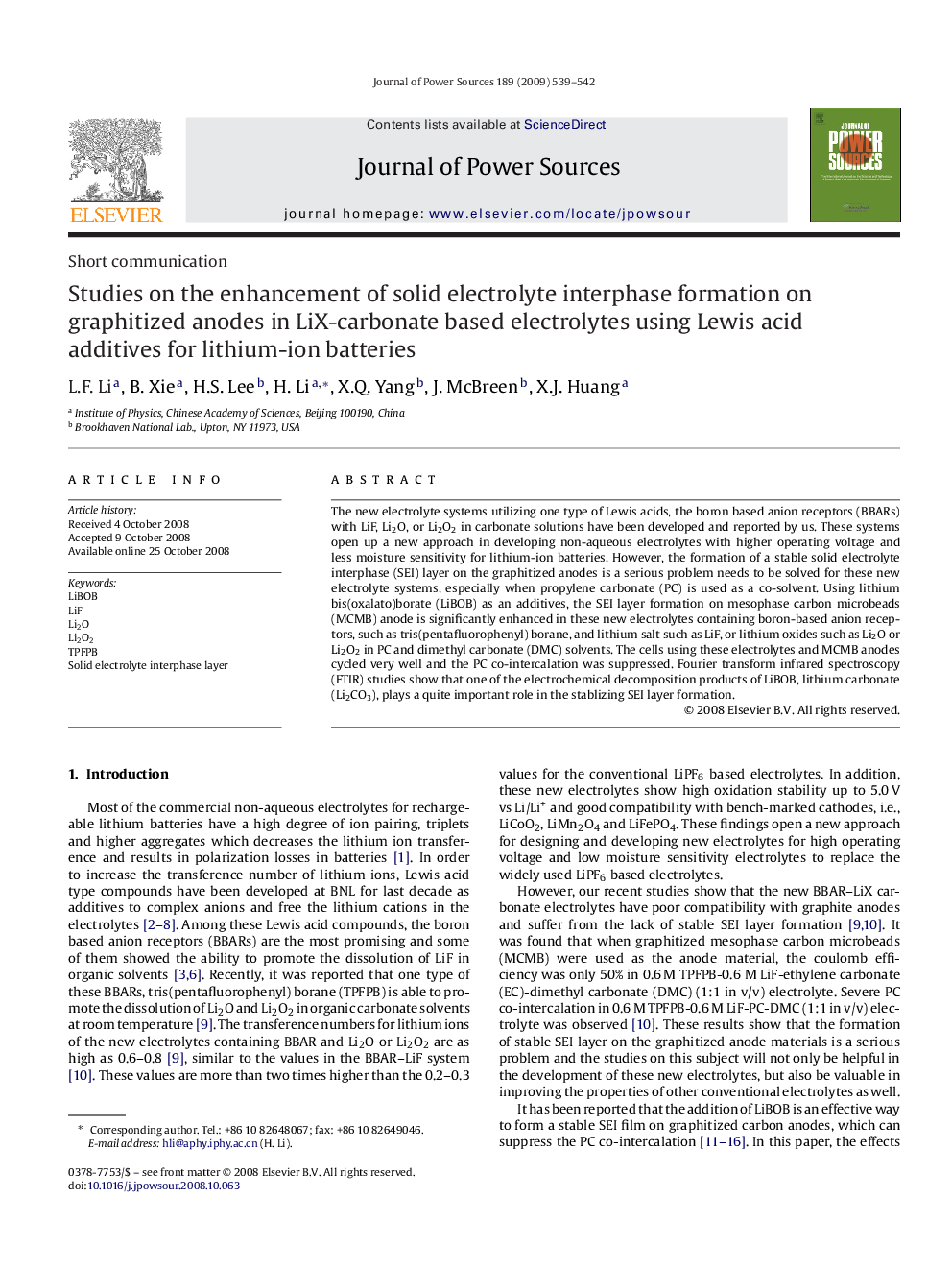| Article ID | Journal | Published Year | Pages | File Type |
|---|---|---|---|---|
| 1291231 | Journal of Power Sources | 2009 | 4 Pages |
The new electrolyte systems utilizing one type of Lewis acids, the boron based anion receptors (BBARs) with LiF, Li2O, or Li2O2 in carbonate solutions have been developed and reported by us. These systems open up a new approach in developing non-aqueous electrolytes with higher operating voltage and less moisture sensitivity for lithium-ion batteries. However, the formation of a stable solid electrolyte interphase (SEI) layer on the graphitized anodes is a serious problem needs to be solved for these new electrolyte systems, especially when propylene carbonate (PC) is used as a co-solvent. Using lithium bis(oxalato)borate (LiBOB) as an additives, the SEI layer formation on mesophase carbon microbeads (MCMB) anode is significantly enhanced in these new electrolytes containing boron-based anion receptors, such as tris(pentafluorophenyl) borane, and lithium salt such as LiF, or lithium oxides such as Li2O or Li2O2 in PC and dimethyl carbonate (DMC) solvents. The cells using these electrolytes and MCMB anodes cycled very well and the PC co-intercalation was suppressed. Fourier transform infrared spectroscopy (FTIR) studies show that one of the electrochemical decomposition products of LiBOB, lithium carbonate (Li2CO3), plays a quite important role in the stablizing SEI layer formation.
